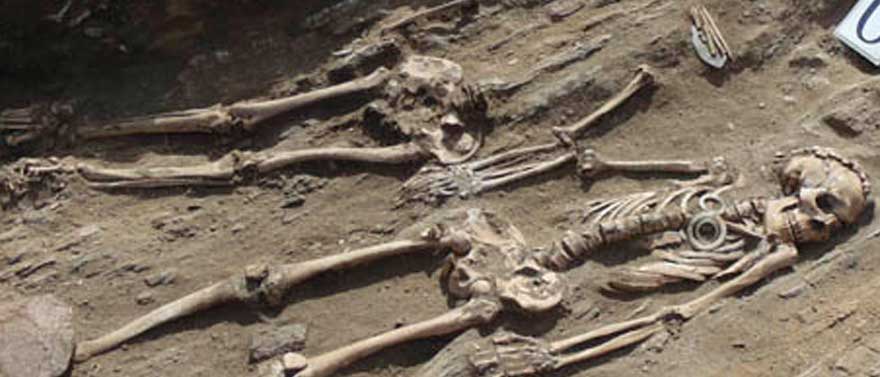Bronze Age burial near Lake Baikal intrigues archeologists who have not yet revealed contents of leather pouch between man’s kneecaps.
Experts speculation that this ancient couple are an elderly man and his wife or concubine, buried for eternity in a show of affection. There are some unique aspects to the couple who are believed to be from the Bronze Age Glazkov culture.
The man’s skeleton had a ring made of rare white jade over one eye socket. Three more were on his chest. Archeologist Dr Dmitry Kichigin said: ‘It was probably somehow connected with their ideas about the afterlife.’
Samples of the bone of the couple have been sent to Canada for radiocarbon analysis, but the Russian team involved in the excavations believe the couple to be 4,500 to 5,000 years old.
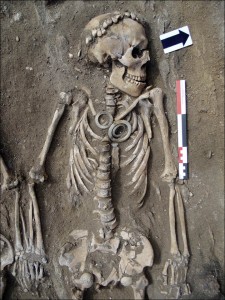
‘In the grave we found male and female skeletons, lying on their backs, heads to the west, hand in hand,’ he said. The site is a sacred burial place since Neolithic times overlooking the waters of Lake Baikal, the oldest and deepest lake in the world.
The male skeleton is complete but rodents destroyed the upper part of the female. Near the woman was a ‘massive’ knife made of jade, some 13 centimetres in length and 7 cm in width.
Pendants of red deer and musk deer teeth were found on the male skull, and around the feet. Most likely, they decorated the hat and footwear.
‘Were they relatives, or an owner and his concubine?’ asked the archeologist. For now the answer is unclear: he would like to conduct DNA tests to check if the pair were related, but this appears to be too expensive.
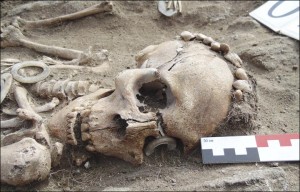
The burial unearthed this summer is located at a cape on Maloe More, the strait that separates the mainland and the Olkhon island, close to Chernorud settlement, in some 260 kilometres to north-east of Irkutsk.
The precise location is being kept secret for now to avoid amateur diggers wrecking a site which is likely to contain more burials, possibly older than this one.
‘We were lucky to find at least one skeleton in excellent condition, with implements and decorations – it is the dream of many archaeologists,’ said Kichigin. ‘It would be very interesting to find out the purposes the massive jade knife, which we found near the woman, was used for.
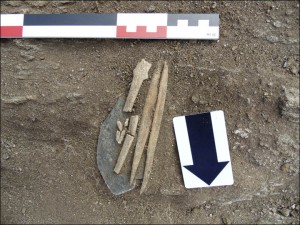
‘We also found some metal implement in a small leather bag between male’s kneecaps.’ Analysis will begin on the finds in the autumn.
‘The cape, where we conducted excavations, was obviously a sacred place for ancient people,’ he said. It was not a settlement but used for religious rites and as a graveyard from ancient times.
‘We can expect a lot of interesting discoveries on this archaeological site, so we plan to continue our work next year.’
The archaeological team led by Dr Kichigan is from Irkutsk National Research Technical University, with the assistance of Yuliana Yemelyanova, from the
Laboratory of Archeology, Paleoecology, and Life Support Systems of the Peoples of North Asia.
As odd as it might seem, the Siberian skeletons holding hands aren’t the first to be found. Last year, CNN reported that an archaeological team from the University of Leicester Archaeological Services unearthed a couple of skeletons holding hands in a grave in a lost chapel overlooking the small village of Halation, England. The skeletons had been placed in that position, according to experts, and had been undisturbed for 700 years.
Back in 2013, the Daily Mail reported on a “Romanian Romeo and Juliet” pair of skeletons unearthed in an inner courtyard of a former Dominican monastery in Cluj-Napoca, Romania. The skeletal bones belonged to a young couple, according to researchers from Cluj-Napoca Institute of Archaeology and History of Art. Adrian Rusu, the lead researcher, said the skeletons had been holding hands since sometime between 1450 and 1550 (450-550 years).
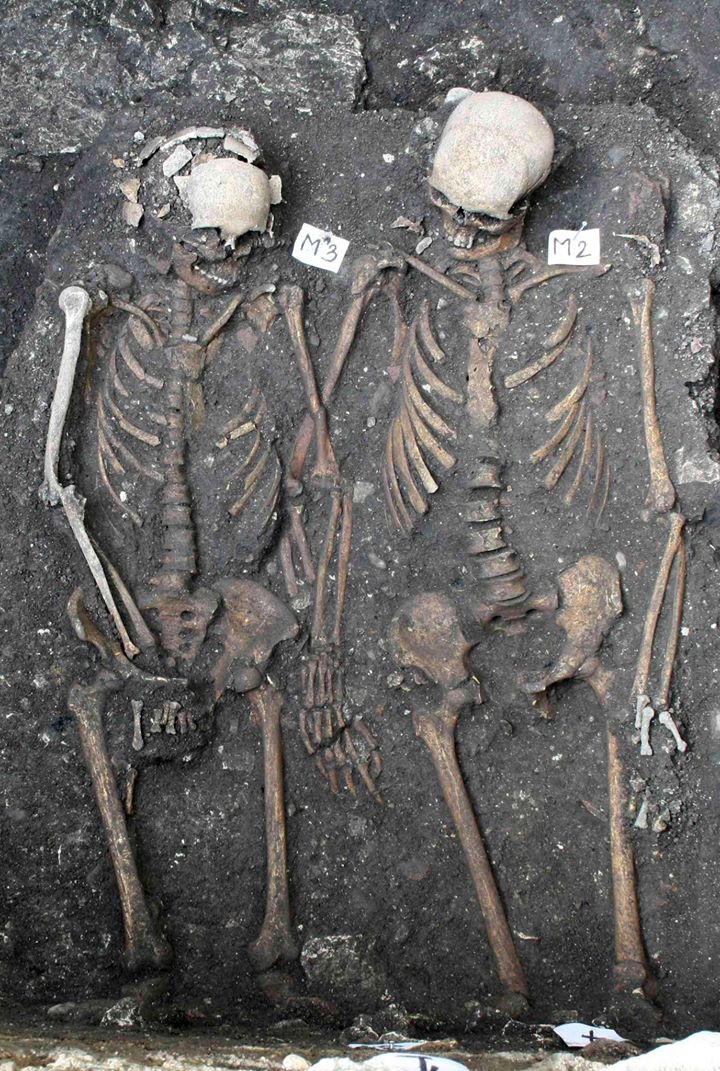
(Photo via Reuters)
But unlike the ill-fated Shakespearean couple, Rusu believes that the young Romanian couple did not die from suicide. He noted that given the religious strictures against suicide, and the fact the couple was buried in a grave on holy ground, pointed away from the pair dying in such a manner.
“They were obviously buried together as a tribute to the love they had for each other,” Rusu said of the skeletons.
Via The Siberian Times and Inquisitr
